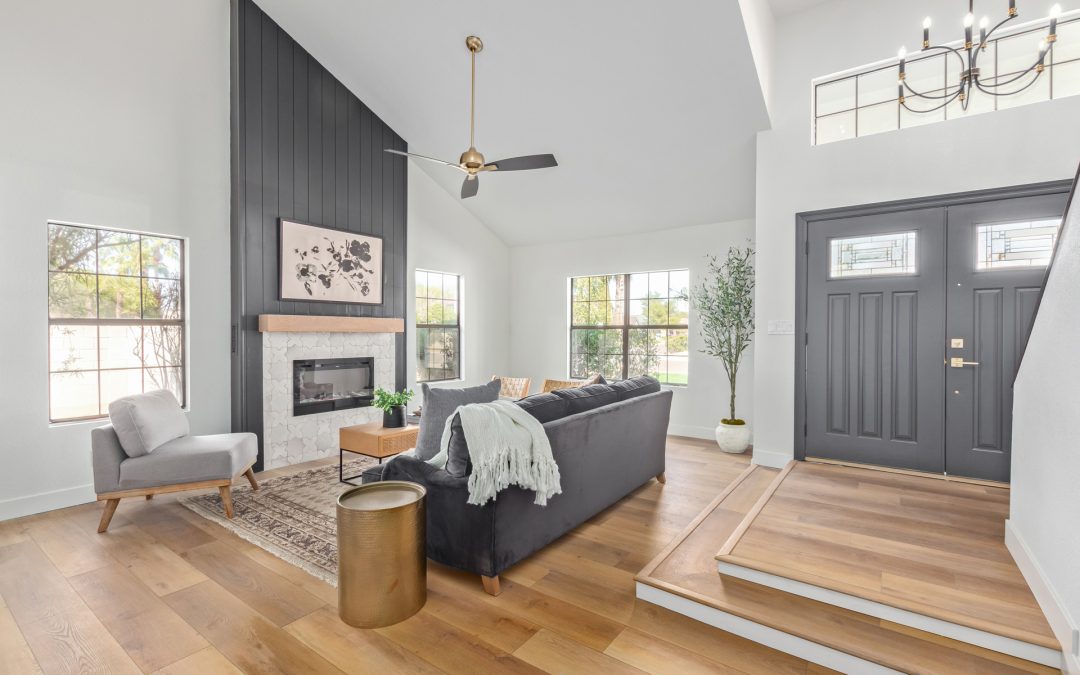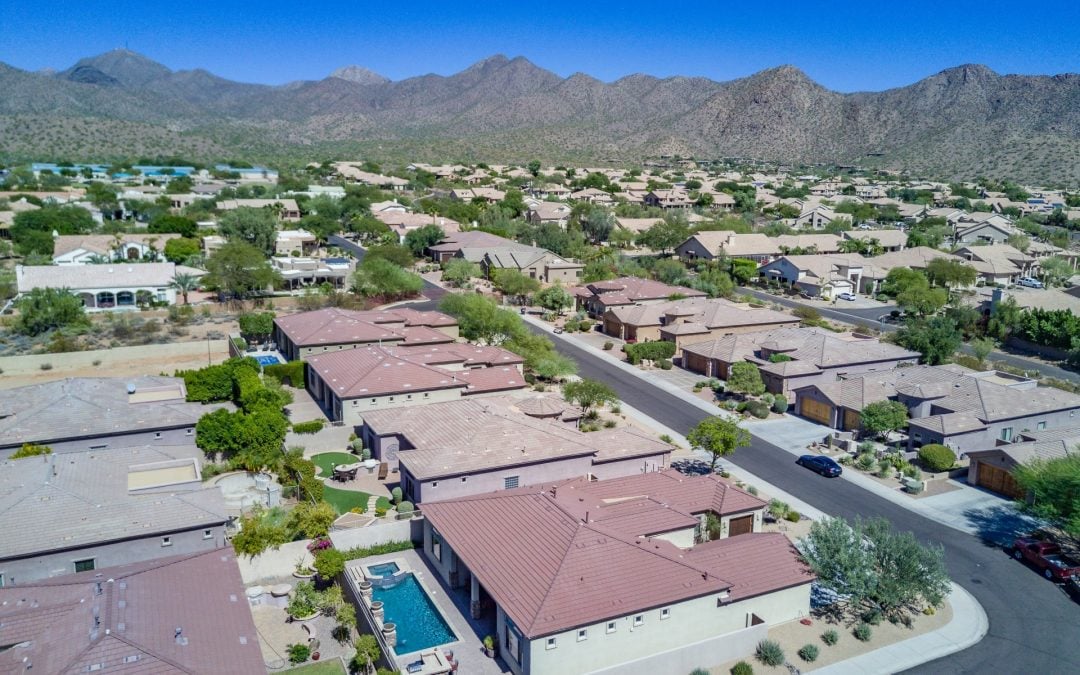
by MICHAEL BODEEN | Aug 7, 2023 | Bodeen Team Blog, Buying a Home, Mike's "Real State" of the Market, Selling a Home
They’re saying that July 2023 was the worst (hottest) on record, but it’s August in the Valley of the Sun, that is the pinnacle of misery. September, though still hot, brings cooler mornings and is a reminder that soon, our chamber of commerce weather will return.
Our Phoenix metro residential real estate market is resembling our August weather slog. Low supply, low demand, and high mortgage rates (7+%), yet still, a seller’s market. Still not much of a break for buyers.
August 1st Market Report
Arizona Regional MLS numbers for August 1, 2023, vs with August 1, 2022 – areas & types:
- Active Listings 11,241 vs 17,957 last year – down 37% – and down 2.6% from 11,545 last month
- Under Contract Listings: 7,546 vs 8,058 last year – down 6.4% – and down 4.0% from 7,858 last month
- Monthly Sales: 5,906 vs 6,190 last year – down 4.6% – and down 21% from 7,452 last month
- Monthly Average Sales Price per Sq. Ft: $282 versus $286 last year – down 1.3% – and down 1.9% from $287.78 last month
- Monthly Median Sales Price: $434,900 vs $452,500 last year – down 3.9% – and down 1.8% from $443,000 last month
On a different note, the new home market is doing much better than resales:
- New home closings totaled 1,352 with a median sales price of $533,592, an all-time record high price
- The new home closed sales count was up 7.6% from July 2022 but down 18.4% from June 2023.
- The new home median sales price is up 3.2% from a year ago, and up 2.8% from last month
One of the reasons why new home sales are fairing better than resales is that builders are providing mortgage rate buy-downs. Resale sellers can do the same, and those sellers that are providing incentives for buyers are more successful in getting to – CLOSED!

by MICHAEL BODEEN | Mar 28, 2022 | Bodeen Team Blog, Buying a Home, Mike's "Real State" of the Market, Selling a Home, Uncategorized
I went to the Suns game yesterday (vs Philly) with my buddy Walter. He has owned Suns season tickets since the Steve Nash era, the last time the local team was a championship caliber team, besides last year. I usually drive to these games, and they’re most always at night, but yesterday Walter graciously drove and it was an afternoon game. Now, why does this matter, and what’s it got to do with real estate?
Glad you asked.
Not driving, and being able to be an observer, I was blown away with the upward growth (literally) of downtown Phoenix. Numerous high-rise cranes were building modern commercial and residential structures. Former run-down neighborhoods (not all) were sprouting economic vitality. The arena (Footprint Center) was like no other arena event I’ve ever attended. It was a sellout (and it’s not even the playoffs) and the fan/arena noise was an amazingly fun assault on the senses. Of course, it does help to have the best pro team in the nation😉
Segue.
“…the Phoenix Metro community as a whole, saw more population growth than any other metro community…”
According to Census data, Arizona’s population gained almost 100,000 this past year. And 99% of our resident growth is attributed to migration, rather than the “natural change” of births and deaths. Of the 98,330 new residents, only 832 were attributable to natural change. Check out this article from the Business Journal:
Maricopa County alone, added more residents (58,246) than any other County in the country. Further, the Phoenix Metro community as a whole, saw more population growth than any other metro community, behind only Dallas-Fort Worth-Arlington area. Arizona ranks, per the Census, as the 3rd fastest growing state in the U.S.
What was just a few years ago never really discussed, but is now the most oft question of the day for The Bodeen Team:
When will this (price escalation) end? Based on the above local and statewide story, not real soon. Seemingly, our demand for a limited supply of housing will continue unabated for the foreseeable future. This will further increase values locally, and statewide.
Caveat: Having said that, in 46 years of residential real estate experience, I’m no stranger to market changes. And when they happen, they can happen quickly.

by MICHAEL BODEEN | Sep 14, 2020 | Buying a Home, North Scottdale Zip Code Information, North Scottsdale News, Real Estate News, Selling a Home
The North Scottsdale real estate market is killing it! The seven zip codes which comprise North Scottsdale are currently showing a monthly median sales price of $715,000. One month ago, the median sales price was $650,000. This is a median increase of $65,000 in one month! Yes, you heard me correctly, the North Scottsdale median sales price rose $65,000 – 10% – in one month.
Listing inventory in North Scottsdale has plummeted. One year ago, North Scottsdale home inventory was at 1409. This year, there are only 1044 homes currently for sale in North Scottsdale – a 26% drop!
How about North Scottsdale rentals? Rising to record lease prices, North Scottsdale home rental prices just hit $1.45 per square foot (psf) this September. This is .06 cents psf higher since last month and a rise of .17 cents psf in one year – a 13% rental price increase.

by MICHAEL BODEEN | Sep 11, 2020 | North Scottdale Zip Code Information, North Scottsdale News, Real Estate News, Selling a Home
The 85254 zip code is one of North Scottsdale’s great central locations, however there is a not-so-dirty little secret about what’s known as the “magical zip code.” The 85254 zip is not in Scottsdale but is in the City of Phoenix and includes Phoenix city services. And the school district? It’s in the Paradise Valley School District. So why is it called Scottsdale? Mailing only. Talk to the postal service.
All of that doesn’t change what a cool place it is for many who call it home.
It’s also exploding in value, with prices up 22% in one year! The supply of homes for sale has dropped in half from 170 one year ago to 112 this month – a 34% inventory drop.
|
Today |
Last Month |
Last Year |
1 Year Change |
| Active Listings: |
112 |
117 |
170 |
-34% |
| Pending Listings |
40 |
37 |
52 |
-23% |
| Sales Per Month |
84 |
110 |
79 |
+06% |
| Sales Per Year |
854 |
849 |
807 |
+06% |
| Months of Supply |
1.3 |
1.1 |
2.2 |
-41% |
| Appreciation – Median* |
22% |
15% |
11% |
+100% |
| Average Price – Sales** |
$665K |
$606K |
$543K |
+22% |
| Median Price – Sales*** |
$627K |
$593K |
$515K |
+22% |
*Monthly Median
**Monthly Average
***Monthly Median
All Data courtesy of the Cromford Report
Considering Buying or Selling in North Scottsdale or the Northeast Valley. Give Mike a call at 602.689.3100 or send an email to: [email protected].
by MICHAEL BODEEN | Jun 27, 2016 | Bodeen Team Blog, Real Estate News, Selling a Home
Alternate Title: The Importance of a Good Pricing Strategy
“We can always come down,” says the confident seller. This is a true statement, but there can sometimes be unintended consequences that can have a serious impact to the overall goal of selling a home for the best price and terms and in a timely manner.
“How long has this been on the market?” asks the interested buyer. In my personal and professional experience, the buyer usually wants to hear one of two responses. Either long or short. If long, the buyer’s thinking; “low-ball offer.” If short, the buyer’s thinking, “I better see this soon!”
What we know for sure:
1) More buyers will see the listing in the first 2-3 weeks of its commencement compared to any other time during the listed period.
2) If there are going to be multiple offers on a home, they usually occur in the first few days of the listing, or the first week after a good price reduction.
3) The longer that a listing is on the market, the greater the distance between the selling price and listed price.
The Phoenix Metro real estate market is currently one of the most well balanced markets in the country, which has not always been the case. In July of 2005, which was the peak of our blistering seller’s market, the average time it took to get a contract on a home was just 24 days. Contrast that with the ugly market downturn in February of 2008, where the average market time for a home to sell shot up to 140 days!
Today, the average market time is 78 days. Bear in mind that the amount of days on the market very much depends on what price range you’re in. If you’re priced under $200,000, your home should sell quickly, depending upon location. If it’s over $500,000, the length of market time increases dramatically. It’s not strange to see the million dollar+ homes sit on the market for a year or more.
For these reasons we always prefer to list the home competitively up front, so take what I’m about to say with a couple grains of salt. If you want to “test the market” with a price that is above what a professional says the home is worth, there may be away you can do so and not get burned. Well, no one can say for sure because it’s a gamble. The method we’ve used to do this, is to list a home with an automatic pre-agreed price reduction that takes place after 3 weeks down to our original recommendation. This way the seller can feel confident he/she isn’t underselling his home, but still get to a competitive price point while interest is still relatively high.
In the technologically advanced age we live in, the world of interested home buyers will see your home online before they ever decide whether or not to go see it in person. If not, they will either file it in the trash never to see it again, or perhaps save it to keep an eye on it. If the home is reduced they will then take note of it again, that is, if they haven’t already decided on different home. The best course of action for the seller is to get the home under contract during the first 3-4 weeks. In this situation the seller will most likely not be “low-balled” and still be able to obtain the best possible price.
Over the years we have seen too many sellers waste time and money because they fail to price their home correctly in the beginning, and worse than that, not reduce the price in time to still capture that initial wave of market interest. This is especially important in our current $500k+ market range where demand is low and supply is high.

by MICHAEL BODEEN | Nov 16, 2015 | Bodeen Team Blog, Buying a Home, Real Estate News, Selling a Home
2014 was one of the most balanced years in the Phoenix Metro residential real estate market according to Michael Orr’s (ASU) Cromford Index. One year ago the Cromford Index was just above “100” which Mr. Orr has determined to be a “balanced market” between supply and demand.
From that point the index steadily increased in 2015 favoring a seller’s market. The seller’s market that ensued reached an index of 148 during the first week of September just over two months ago. It has now steadily been decreasing and currently resides at 131. Remember, 100 is balanced, so this reversal only reinforces our market’s trend of maintaining balance.
For context, the Cromford index reached an incredible high of 308 back in April of 2005-which was the seller’s market of all seller’s markets. Just two years after that the index plummeted to its lowest point ever to 27 in October of 2007, a rabid buyer’s market. I can tell you that both of those markets were hell on steroids to work in.
In the near term, it looks as if balance will continue to prevail. Interest rates are remaining low, the number of buyers will remain about where it is now, and the supply of homes for sale is slightly increasing. For there to be meaningful change in any given buyer or seller direction will require an abundance of more buyers to send home prices higher, or a significant increase in the number of homes for sale to drive down values for buyers. From our vantage point we don’t see either of those events happening soon.
The major impacts however will be price based. The lowest price ranges (under $300K) will continue to be very strong for sellers. The highest price ranges, especially over $2,000,000 will not be kind to sellers. The moderate price range ($300K to $800K) should continue in, shall we say, a balanced sort of way.
If you or someone you know would benefit from our expertise, by all means have them contact us. We’ll be happy to help. It’s what we do! (602) 689 – 3100
Mike Bodeen
|






